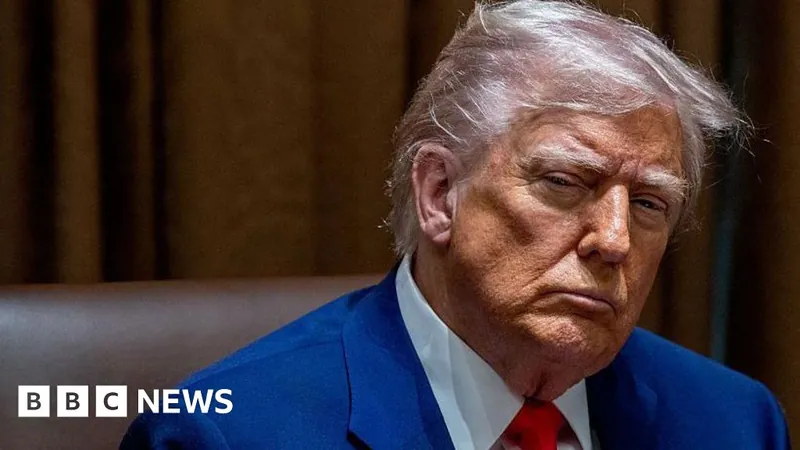
Why US Bond Markets Are Suddenly the Center of Attention
2025-04-19
Author: Emma
What’s Driving Interest in US Bonds?
In a surprising twist, investors are now closely monitoring the US bond markets, a sector typically characterized by its stability. Amidst global stock market fluctuations fueled by trade tariffs, this usually calm arena is witnessing unusual volatility.
Understanding Government Bonds
Here's the scoop: when governments need to raise funds, they issue bonds—essentially an IOU promising to pay back the borrowed amount with interest. In the United States, these bonds are referred to as "Treasuries" and are a cornerstone of the financial world.
The Current State of US Bonds
Typically viewed as a secure investment, US bonds have recently lost some of that golden sheen. After President Trump’s "Liberation Day" tariffs triggered an immediate market slump, investors shifted their attention. Initially, it seemed they flocked to bonds, but as actual tariffs took effect, a sell-off ensued.
What’s worrying? The yield on 10-year government bonds surged from 3.9% to a staggering 4.5%, with 30-year yields approaching 5%. Such moves indicate a significant shift in investor sentiment towards perceived risk.
Impact on Everyday Americans
But why should you care? When government borrowing costs rise due to increased yields, the ripple effect can reach ordinary Americans. Higher borrowing costs could squeeze budgets and hinder public spending, escalating expenses for businesses and households alike.
John Canavan from Oxford Economics emphasizes that increased government rates directly influence other lending rates such as mortgages and credit cards. This could make life tougher for first-time homebuyers and small business owners who rely on loans.
Trump’s Reaction to Bond Market Chaos
Trump, who previously urged resilience, appears to have backtracked under pressure. With jobs potentially at stake, the fallout in bond markets prompted him to pause some higher tariffs, despite maintaining a blanket tariff on several countries.
Drawing Parallels to Past Economic Crises
This turmoil recalls former UK Prime Minister Liz Truss’s mini-Budget, which led to a similar bond market crisis. The chaos raised eyebrows and fears that the US Federal Reserve might have to intervene if conditions deteriorated further.
Though yields have stabilized somewhat, many analysts warn of lingering risks now factored into US Treasury bonds, echoing what was seen in the UK crisis.
The Bigger Picture
As the bond market remains under scrutiny, the ongoing situation reminds us how intricately connected global economies are and how swiftly investor sentiment can flip. For now, keep an eye on those yields—they might just be the key to understanding the broader economic health of the US.









 Brasil (PT)
Brasil (PT)
 Canada (EN)
Canada (EN)
 Chile (ES)
Chile (ES)
 Česko (CS)
Česko (CS)
 대한민국 (KO)
대한민국 (KO)
 España (ES)
España (ES)
 France (FR)
France (FR)
 Hong Kong (EN)
Hong Kong (EN)
 Italia (IT)
Italia (IT)
 日本 (JA)
日本 (JA)
 Magyarország (HU)
Magyarország (HU)
 Norge (NO)
Norge (NO)
 Polska (PL)
Polska (PL)
 Schweiz (DE)
Schweiz (DE)
 Singapore (EN)
Singapore (EN)
 Sverige (SV)
Sverige (SV)
 Suomi (FI)
Suomi (FI)
 Türkiye (TR)
Türkiye (TR)
 الإمارات العربية المتحدة (AR)
الإمارات العربية المتحدة (AR)